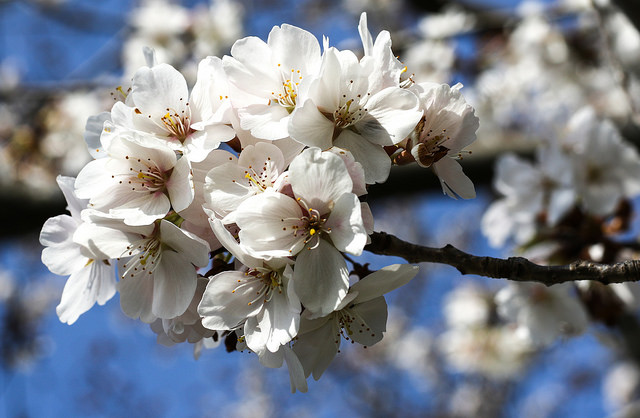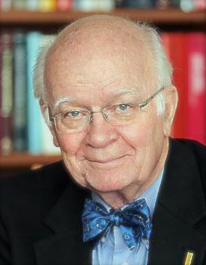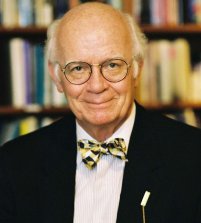Catholic Identity: A Balancing Act?
Early in my writing career I set out to describe a certain posture or pose, and chose—pretentiously, I admit—to speak of an “equilibristic stance.” The article which included this ungainly phrase was then translated into German, where it appeared, auf Deutsch, as “Balanceakt.” The concept behind the term stayed with me, and I find myself regularly drawn to observing people who deal with paradoxes, contrarieties, and dilemmas as engaging in such “Balanceakts.” That word again came to mind as I recently sighted many items about leaders in Catholic higher education
 Early in my writing career I set out to describe a certain posture or pose, and chose—pretentiously, I admit—to speak of an “equilibristic stance.” The article which included this ungainly phrase was then translated into German, where it appeared, auf Deutsch, as “Balanceakt.” The concept behind the term stayed with me, and I find myself regularly drawn to observing people who deal with paradoxes, contrarieties, and dilemmas as engaging in such “Balanceakts.”
Early in my writing career I set out to describe a certain posture or pose, and chose—pretentiously, I admit—to speak of an “equilibristic stance.” The article which included this ungainly phrase was then translated into German, where it appeared, auf Deutsch, as “Balanceakt.” The concept behind the term stayed with me, and I find myself regularly drawn to observing people who deal with paradoxes, contrarieties, and dilemmas as engaging in such “Balanceakts.”
That word again came to mind as I recently sighted many items about leaders in Catholic higher education. Those who pursue careers in higher education often need to contend with forces that are difficult to blend or balance. Think, as every college professor of theology or religion must, of the difficulty some have with “secular” demands, on the one hand, and “spiritual” calls or commitments on the other. The current case in point was pointed out by Michael J. O’Loughlin in an article in America magazine (June 11 issue) headlined “Is Catholic identity hurting enrollment at Catholic colleges?”
While “colleges and universities across the United States have struggled to meet enrollment goals for the last decade or so,” we read, Catholic schools face further challenges because they must “market themselves to an increasingly secular applicant pool while trying to catch up to their secular peers in terms of financial resources”—peers who, by the way, are busy trying to catch or keep up with each other. O’Loughlin focuses on Loyola University of New Orleans, where in a campus climate survey it was “found that 64 percent of the faculty have ‘seriously considered leaving Loyola in the past year.’” Institutional instability was a much-cited factor. DON’T PANIC is the counsel of some consulted leaders: “For every negative story there is out there saying enrollment has gone down, there’s a story on the opposite end saying enrollment has gone up … It’s part of the normal ebb and flow of higher education.” Not everyone is so assured.
Certain notable Catholic institutions merit O’Loughlin’s special attention, chief among them the Catholic University of America, “the only university in the United States with a papal charter,” with its necessary immediate budget cutbacks including a 9 percent reduction in full-time faculty. One consultant noted: “Students are open to having their experience enriched by Catholicism, but not necessarily defined by Catholicism … They want to go to college; they don’t want to go to church, necessarily.” Meanwhile, CUA, under the leadership of President John Garvey, has received both praise and criticism for decisions which include the favoring of Catholic faculty appointments over others, in order to promote a more explicitly pro-Catholic campus environment.
President Garvey and Provost Andrew Abela proudly stress that most of the two-hundred-plus Catholic universities “do not take their Catholic identity as seriously as we do.” But some fear that the future of CUA is thereby threatened. Faculty and supporters claim that a campus feud has resulted from Garvey’s and Abela’s “supposed desire to transform the school into a conservative bastion,” with pressure from big donors prompting “debates over hiring” on political/ideological/economic grounds. Anyone who pays attention to the participants in this feud soon learns how difficult is the mission of CUA and its leaders.
These issues, of course, are not confined to Catholic schools. The scene of greatest controversy these years is the one code-named “evangelical.” Most mainline-Protestant-initiated universities—from colonial times of Congregational-Episcopal dominance through the nineteenth century, when the West and South saw Methodists, Lutherans, Presbyterians, and others prosper—have not emphasized the relationship between ideology and identity so much, though most of them do make efforts to build upon the values associated with the ideals of their founders and subsequent “greats.” We might envy the students who profit from life in schools where the “Balanceakt” is working healthily. But who would envy the campus leaders who have to struggle to find and maintain that elusive balance?
Image: Yoshino cherry trees in bloom on the campus of the Catholic University of America | Photo Credit: Lawrence OP/Flickr (cc)
 Martin E. Marty (PhD’56) is the Fairfax M. Cone Distinguished Service Professor Emeritus of the History of Modern Christianity at the University of Chicago Divinity School. His biography, publications, and contact information can be found at www.memarty.com. Martin E. Marty (PhD’56) is the Fairfax M. Cone Distinguished Service Professor Emeritus of the History of Modern Christianity at the University of Chicago Divinity School. His biography, publications, and contact information can be found at www.memarty.com. |
Sightings is edited by Brett Colasacco (PhD’18). Sign up here to get Sightings by email. You can also follow us on Facebook and Twitter.


